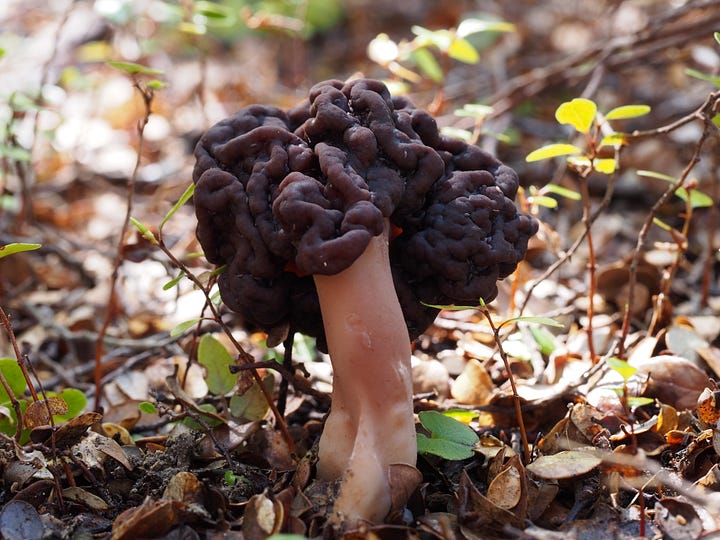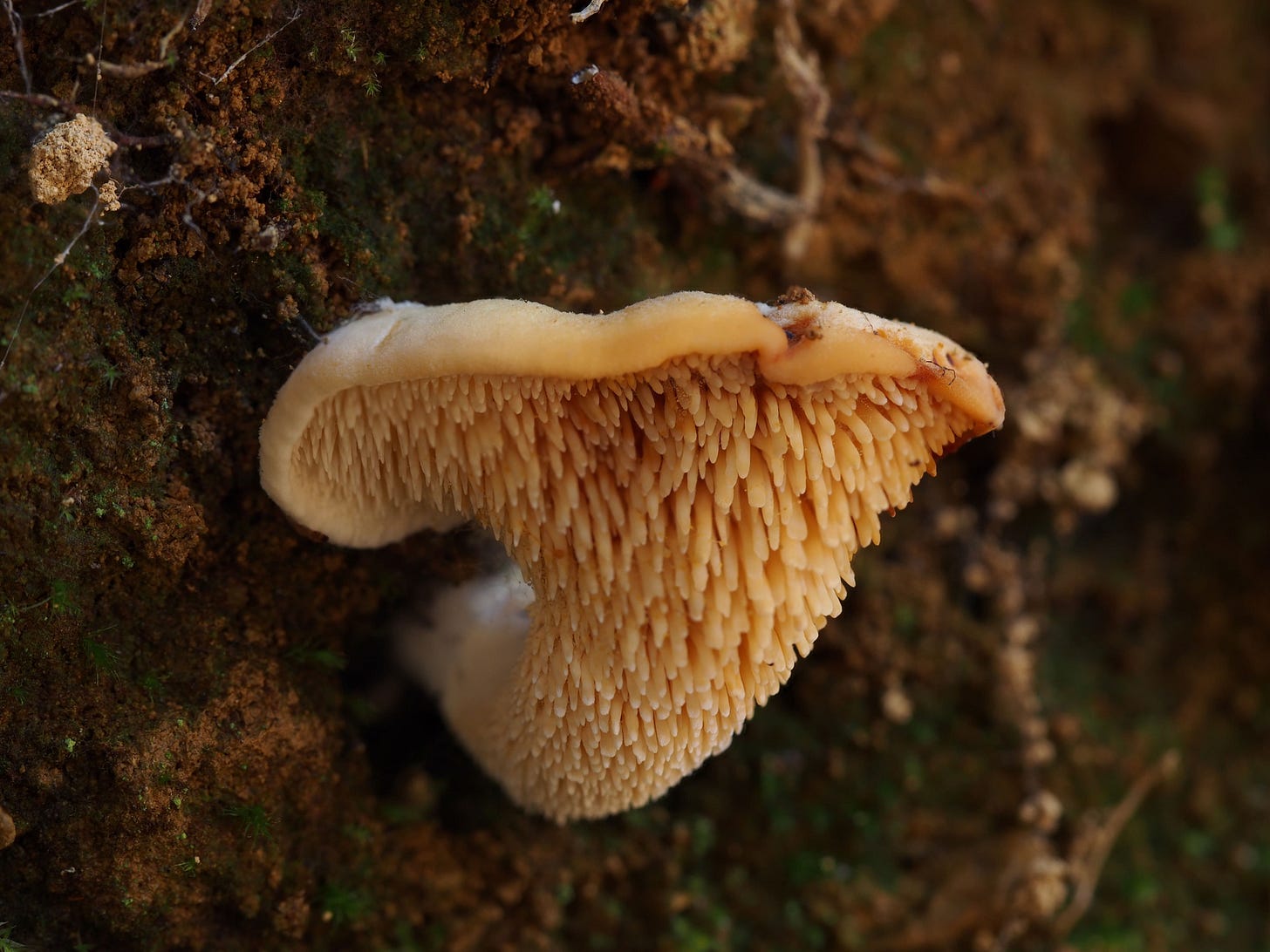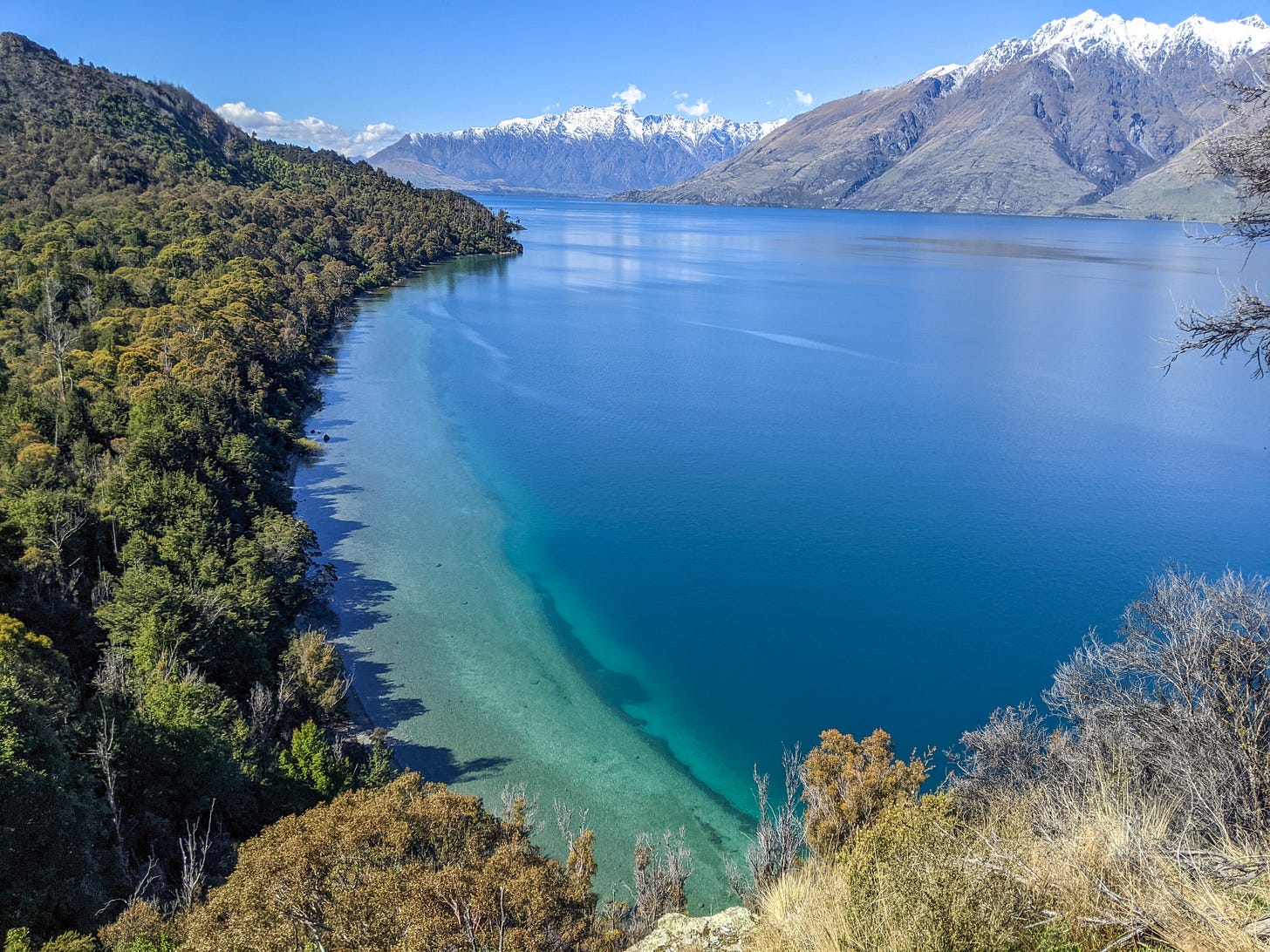A Morel Quest: Mushrooms on the Mt. Crichton Loop Track
A record of mushroom species during a Springtime foray outside Queenstown, New Zealand.
September 2021
Walking the Mt. Crichton Loop Track, my pace naturally syncs with the familiar path. Though I trekked here just last year, today everything feels fresh and new. My eyes are drawn to the forest floor, intrigued by the variety of mushrooms that have emerged.
It's late September, and the forest is alive with Southern False Morels, or Gyromitra tasmanica. Their brain-like formations are hard to miss, but my interest lies in uncovering the less common species. I soon spot false truffles, emerging from the earth in their unique, almost extraterrestrial forms.


I carefully examine an Octaviania tasmanica, photographing its response to touch as it turns a deep red. Cutting one open, I'm greeted by a surprising burst of liquid and a dense, well-done steak-like interior.



The trail offers more than just fungi: I come across the leathery Cortinarius cartilagineus, stumble upon a century-old hermit's shack, and watch a modern-day prospector in a wetsuit, scanning the riverbed for gold.



Further along, I find Hydnum crocidens var. wellingtonii, their cream-colored caps a delightful sight.

In the days following, as I explore Bob's Cove and the Twelve Mile Delta, I hold onto the hope of discovering a true morel, a sought-after rarity in this mushroom world. Remarkably, my search eventually leads me to a small Morchella tasmanica.



Each mushroom I encounter brings a sense of childhood wonder, a reminder of the thrill in exploration and discovery. From the green and yellow Cortinarius lachanus, understated elegance of matte black Entoloma Subg. Cyanula to the vivid formations of Ramaria coral fungi.





Off the beaten track, I experiment with a UV torch, revealing a vibrant, hidden aspect of the fungi around me. Hypholoma species glow in surprising shades of yellow-green, their unassuming exteriors hiding vibrant secrets.


In the bush, I discover branches hosting Daldinia, commonly known as Coal Fungus, King Alfred’s cake, cramp balls, or carbon balls. This fungus, resembling a chunk of coal, sports a hard, shiny black exterior, 2 to 7 centimeters wide, with distinctive silver-grey and black layers inside its fruiting body. These layers, akin to tree rings, indicate its age.



Legend ties it to King Alfred, who, during a war, accidentally burned cakes he was supposed to watch, lending the fungus its cake-related names. Not just a curious find, Daldinia serves as an effective tinder. Completely dry, it ignites with a spark from flint and steel, burning slowly with intense smoke, requiring continual oxygen flow to maintain its ember. Breaking off pieces reveals more embers, useful for igniting a tinder bundle into flame.
As evening descends, the forest's quiet majesty captivates me. In these serene, unspoiled spaces, every discovery – from unique fungi to the distant, stunning vistas of the Remarkables – imprints a lasting memory.









That Daldinia is my fave
What interesting mushrooms! The Remarkables are pretty nice too!